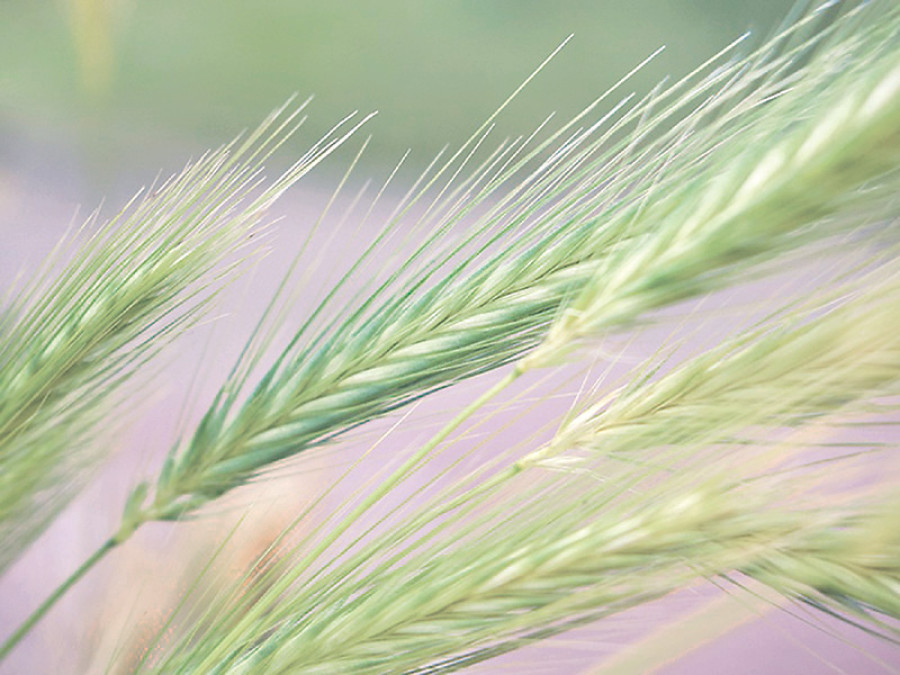Opinion
Sustainable practices
Agro-biodiversity has to be promoted and conserved if our food system is to withstand climatic and market shocks
Aadesh Subedi
Fiddle head fern and slippery gourd are some vegetables I usually prefer in my recipe when I go to my home in Pyuthan. Though we didn’t grow them in our fields, these crops were readily available around our village a few years ago thanks to people from the upper hill areas who grew and marketed them. Unfortunately, these days vegetables like those are rare finds. As modern technology and inputs are making their way to farmer’s fields in rural areas, farmers are gradually switching to high value crops. Consumer demand is further stimulating a convergent food system in Nepal. As a result, we are not only losing a large share of agro-biodiversity but also weakening a strong foundation of future food security.
Preparing for the future
At a time when farmers are struggling with a rapidly changing climate, agro-biodiversity stands as a suitable option towards resilience. A large reservoir of drought, pest and disease resistant genes, local crops and varieties help in providing plant breeders with a wide range of genetic resources to develop locally adapted high yielding varieties. In addition, wide varieties of crops also provide diversified sources of income to farmers while also giving consumers different choices of food and nutrition. However, rapid commercialisation and provision of subsidies on the inputs for certain varieties and crops have diverted farmers away from locally and traditionally important crops, compromising both nutrition and taste.
Many varieties of crops and wild edible plants are on the brink of extinction as farmers prefer high yielding hybrid varieties to locally found varieties that are both hardy and tasty. The Thapsani variety of rice, for example, was a popular variety of rice grown in Kathmandu a few years ago but it is no longer available in the Valley. Loka basmati, Sokan and Sarho are among some other varieties of rice that are moving towards extinction. Indigenous vegetables and fruits such as asparagus and bead plum are also suffering a great decline these days.
Rapid diffusion of western culture is one of the major culprits for the decline in production and consumption of traditional crops. Growing trends of westernisation triggered by globalisation have substantially changed the dietary pattern of Nepalis. People are slowly and gradually moving away from traditional foods. Consequently, there is less of a demand for traditional crop varieties, while the high value crops are replacing their position in the market. For instance, the production and consumption of finger millet has markedly decreased over the recent years in Nepal despite its rich nutritional quality and higher climate resilience. In contrast, the production of potato, as reported by Food and Agricultural Organisation (FAO), is increasing as western style foods like fried potato chips are eliciting greater demands in the market. Unmanaged urbanisation has also caused a severe loss of agro biodiversity through the fragmentation and destruction of forests. Growth of cities has mainly afflicted the growth of wild edible plants such as amaranths and clover that are not grown in fields but are collected from forests.
As an endeavour to conserve and protect the existing biodiversity, the government of Nepal has promulgated various policies and programs. However, due to technological, financial and institutional barriers, the effectiveness of such programs and policies is still below the mark. For instance, the government promulgated the agro diversity policy 2014 with an aim to collect and conserve genetic agricultural resources for developing sustainable food systems through diversity. Furthermore, the Nepali government also established the Nepal Agriculture Genetic Resources Centre in 2010 for the conservation and utilisation of agro diversity. Still the vulnerability of genetic resources in food and agricultural crops is the same. A gradual disappearance of landraces and plant species of shorea, larix and eucalyptus in recent years is sufficient evidence to corroborate this fact.
Conservation is key
Sustainability is something that is no longer optional but mandatory. In the 21st century, with climate change afflicting all dimensions of the agro ecosystem, it is virtually impossible to achieve sustainability in the food system by depending on fewer crops and varieties. Therefore, the government should focus its plans and policies on conserving local landraces and crops.
Participatory plant breeding can be an effective way to conserve and promote local crops and varieties. Contrary to conventional plant breeding that solely relies on laboratory and research plots, participatory plant breeding involves breeding activities within a farmer’s field and involves farmers at different stages of breeding. On the one hand, participatory plant breeding helps to conserve local crops and their genetic constituents, while on the other hand it also aids in promoting traditional farming practices that are suitable to existing environmental conditions.
The establishment of community seed banks is another way to effectively conserve local landraces. Though the government has established seed banks at different places, their reach is still very narrow. Therefore, public investment should be directed to establish community seed banks at different places.
The scale of production of any good solely depends upon its demand in market. For this reason, we should create demand for traditional and local foods and crops by consuming them so that farmers can be motivated to produce and maintain these crops.
As British journalist David Attenborough says, to ensure food security, stewardship of the whole range of biodiversity is required “rather than just one or two stars”. Sadly, our food system is following a negative trend where farmers are moving towards monoculture by promoting, producing and conserving only a few varieties of crops. Such trends make our food system more vulnerable to climatic and market shocks, increasing the likelihood of pre-existing hunger and malnutrition. Therefore, the government, consumers and farmers should pull no punches in promoting and conserving agro biodiversity.
Subedi is pursuing a BSc in Agriculture from the Agriculture and Forestry University, Chitwan




 16.12°C Kathmandu
16.12°C Kathmandu










